What does this peculiar, postmodern form of advertising mean today?
In the Christmas classic Home Alone (1990), after the initial thrill of being left to his own devices has worn off, Macaulay Culkin’s Kevin McCallister walks home in the snow. An off-duty Santa tries to cheer him up with a handful of Tic Tacs (“My elf took the last of the candy canes”), before Kevin walks past the window of a house not unlike his own, but populated with a wholesome Christmas scene. A family gathers around a tree, a mother bounces a baby, the camera pans out to show the rest of the house similarly illuminated and filled with dancing figures. A man briefly looks directly into the camera, catching Kevin’s eye, then quickly moves on. There’s nothing for Kevin here. He’s starting to feel like being alone at Christmas might not be the best thing he could have wished for after all.
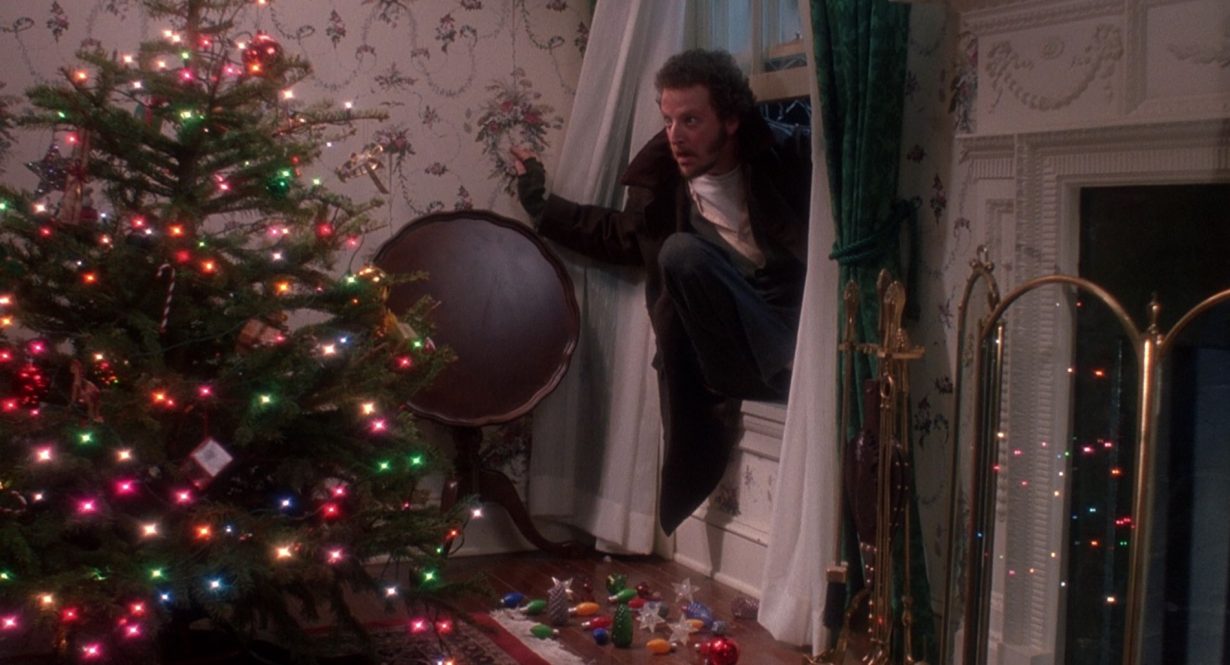
Something about looking through a window and yearning feels essential to Christmas, so much so that it’s become the basis for a very particular tradition. The concept of the holiday window display was pioneered by RH Macy’s in 1874. The New York department store was at that point a dry goods store in a different location from its 34th Street spot when decorators unveiled strings of porcelain dolls representing scenes from Harriet Beecher Stowe’s Uncle Tom’s Cabin (1852) in the window. Less than a decade later, in 1883, the displays were being mechanised – and thus a global arms race began. Holiday windows today are an institution, sparking queues around the block and column inches to match. In London, Harvey Nichols and Liberty both showcase intricate displays, and Harrods commissions designers to outfit 52 individual windows encircling the building.
The most famous display where I live caused something of a social media firestorm this year. The Christmas window at Fenwick, the flagship department store on Northumberland Street in Newcastle-upon-Tyne, is an institution in the North East of England. I remember visiting as a small child in the 1990s, queueing up for what felt like hours in the cold to eventually see an animatronic Santa’s workshop scene, a row of bearded elves manning a conveyor belt, sanding little wooden figures, bringing down their hammers again and again and again.
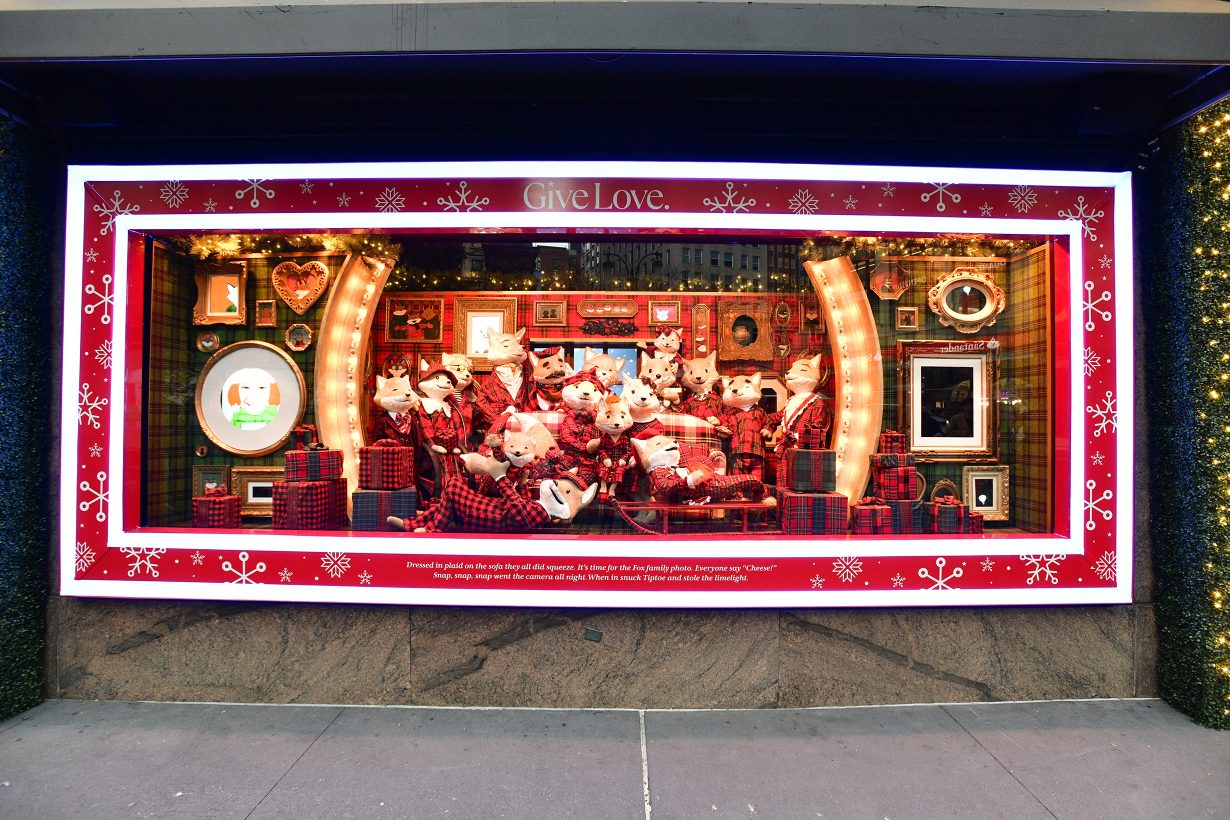
Fenwick’s Christmas window displays were first mechanised in the 1970s, though there had been static ones for much longer. Fenwick’s 2022 window however, has gone down badly. The store collaborated with illustrator Lauren Child, known for her naively styled children’s books. Fenwick Newcastle posted a social media video ‘unveiling’ the window online, which consists of nearly ten minutes of the illustrator describing the scenes from her window. Child introduces a slightly convoluted but ultimately sweet story about making do when the circus is cancelled (“Christmas won’t be Christmas without the circus!” apparently – won’t it??). The Facebook unveiling of Fenwick’s window attracted more than 1,300 comments, most of them disappointed, several very pissed off. When I went to see it there was a woman behind me livestreaming her disappointment on her phone. Her children looked on, bemused.
‘Sorry, but the one year we all needed a real heartwarming traditional Christmas theme and you’ve given us middle class cardboard nothingness. This year especially we all needed cheering up. At least Tarquin and Saffron on their way back from Waitrose will like it,’ reads the top Facebook comment.
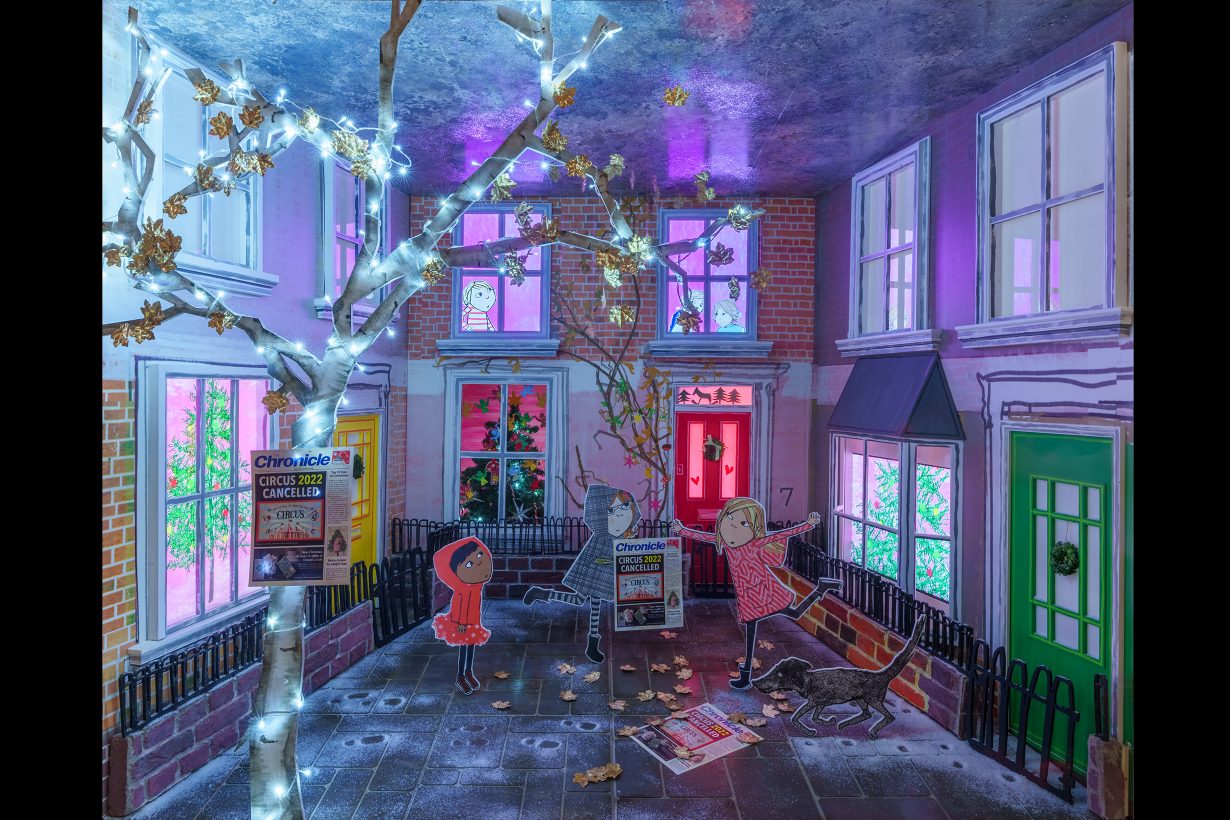
Holiday windows today are no small undertaking; Macy’s has a team of 200 people responsible for its visual merchandising, working on preparing the Christmas window all year round. So it’s confusing when a brand gets it so wrong, especially when you know a lot of planning and resources have gone into it. There was clearly an attempt here to hit all the right notes: the story itself is a gentle tale of learning to live with disappointment and adversity, a theme that children who’ve lived through a pandemic will find particularly familiar. The cast of characters are diverse and nice enough, if not particularly memorable. One of the most common complaints was that the window wasn’t traditional enough; people yearn, it seems, for a time when Christmas was Christmas. ‘Middle class’ papercuts are too self-referential perhaps, too postmodern. (In fact, the oldest surviving feature length animated film, The Adventures of Prince Achmed, created in 1926 by German artist Lotte Reiniger, consisted of a series of papercut figures dancing and moving in silhouette.) Papercuts must have felt like they might have been the perfect compromise then, a wry nod to the artificiality of the medium without being too ostentatious when people are struggling in a cost-of-living crisis. Curiously though, it’s exactly because people are struggling that the window’s detractors wanted to see something more; lots of people complained that papercuts looked like the store was trying to save money.
Conceptually, holiday windows already represent a sort of postmodern advertising though. It’s not really the window itself that forms the advertisement but the crowd you’re able to draw with it. After all, most department stores don’t sell mechanised figures that can be arranged into a tableau – why would they? The point of the holiday window is not to be universally accessible to the consumer, but to draw them near, to fill them with festive longing. In his book about the history of festive window dressing, Smithsonian curator William L Bird quotes Harry Harman, an ‘artistic decorator and window draper’ working in 1894, when the art form was still relatively young. Excited shoppers were compelled to gather ‘in front of the most attractive window’, Harman said. ‘What better advertisement does a Merchant want?’ he asked.
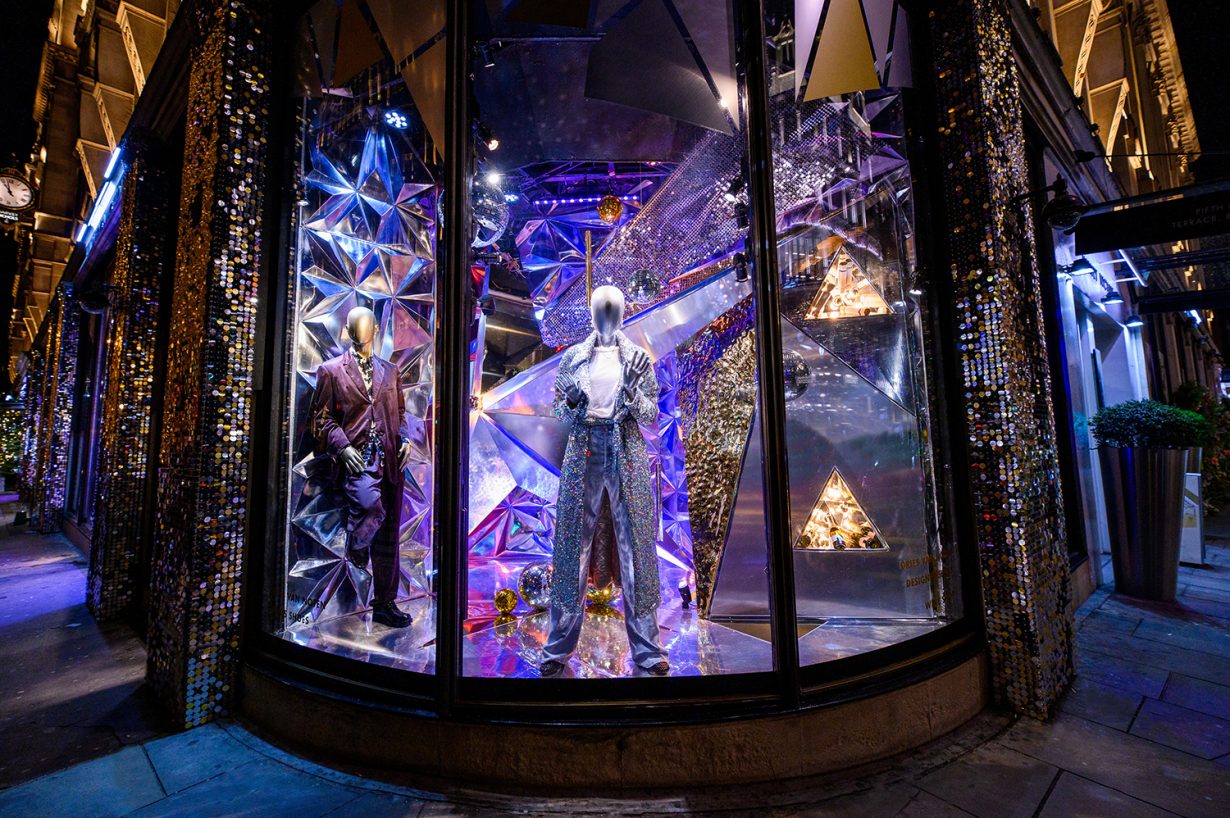
Later in Home Alone, when Kevin’s loneliness has become the least of his problems, he manages to divert Joe Pesci and Daniel Stern’s burglars by staging a mock Christmas party in his home. The scene is remarkably like that of a mechanised holiday window display: a mannequin dances on a turntable; Kevin manipulates puppets with an elaborate Rube-Goldberg type setup made of string and pulleys; a toy train set carries a cut-out of Michael Jordan round in a never-ending loop. From outside, with the rooms lit, music playing and the curtains drawn, the silhouettes dance, the house looks occupied and the burglars are convinced to move on.
All windows are like this really: they’re a frame that binds and divides, includes and excludes, they’re perfectly placed to deceive, to show you things you think will fulfil you, before you ultimately have to trudge home in the snow. It’s no wonder really that we become so consumed by how to dress and frame this barrier at Christmas, when it matters most. It might seem trite, but it’s pretty clear that, for many people, Christmas is when connection is most important – so conversely it’s when exclusion, loss and poverty bite the hardest too. As the literary historian Yuri Lotman puts it: ‘The notion of boundary is an ambivalent one: it both separates and unites.’
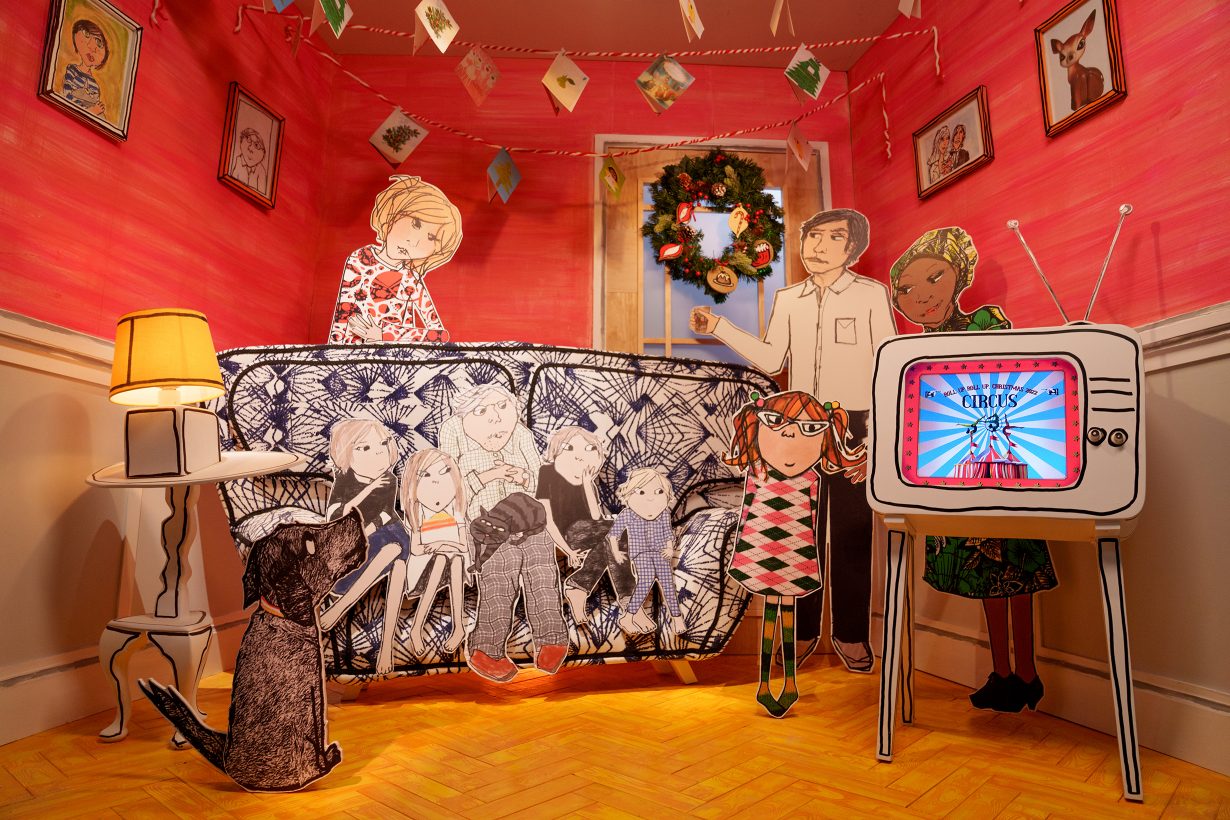
And if you’ve ever tried to take a photograph of a Christmas window display you’ll have noticed another problem here: no glass is ever completely translucent to the observer. A child who feels alone at Christmas sees not a jolly festive scene but their own isolation reflected back at them. Did Black children gazing into the window of the 1870s RH Macy’s store see a happy festive scene, or did they see figures (in all likelihood Golliwogs) from a parable about their own dehumanisation, rendered as trinkets and jauntily arranged for other people’s families to buy, and smilingly unwrap? Newcastle’s shoppers saw their own reflection too: struggling parents who want something – anything – to not be a total letdown. When it comes down to it, people don’t really want to be reminded of the last two years of cancellations, of hopes raised and dashed, of the poverty of their expectations, or of how flimsy everything feels; figures made of cardboard and paper that might have been enchanting when we were children, but now just look like another money-saving exercise. It’s a difficult world out there for a visual merchandiser as late capitalism’s contradictions crash into each other: too extravagant and you’re rubbing it in, or wasteful; too modest and you’ve disappointed everyone. Cheers, son’s crying.
